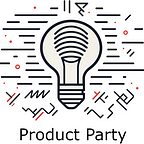Five steps I use to identify a feature.
- Immerse in the User Experience
- Analyze Functionality and Limitations
- Ideate Diverse Solutions
- Validate Solutions with Trusted Sources
- Refine and Prepare for Development
Although our product lives vary significantly daily, creating a simple and repeatable approach to finding features can make life a little easier.
It helps establish consistency with your peers, can give you a good idea of how long it might take to research, and can help mitigate some analysis paralysis.
Don’t forget that features don’t help your users if they’re stuck on the backlog. Getting change into production is incredibly important for improving your users’ pains.
Let’s hit on the 5 steps I use to identify features to be built by my development teams.
Immerse in the User Experience
I invest time directly with the users related to the product to understand interactions and pain points. Chatting, over-the-shoulder shadowing — use any means you have available.
I identify all areas of improvement — focusing a bit more on the proposed problem to be solved.
I then document and lay out all of the issues I saw and explain why they’re problematic, highlighting the problem in question.
Analyze Functionality and Limitations
Next, I’ll document the product’s operational aspects and pinpoint areas where it falls short.
I assess the reasons behind these shortcomings to guide future enhancements.
I create documentation that will help me explain to the team what the current process is and specifically where I feel things are breaking.
Ideate Diverse Solutions
I use the documentation created to develop various solutions, from simple, immediate fixes to complex, long-term improvements.
I want to ensure that each proposed solution addresses key issues identified in the user experience.
I need to understand whether we can fix a problem with a low lift or if we need a huge feature, and talking this through with the team is the best way to achieve my goal.
Validate Solutions with Trusted Sources
After I have a few options, I present the proposed solutions to a selected group of experienced users and leaders for feedback.
I use their insights to refine the solutions, ensuring they are comprehensive and practical.
I assess their feedback and pick an option that is reasonable to deliver.
I need to fully understand if I can explain to senior leaders why we should do it. If not, I look towards the less complex approach.
Refine and Prepare for Development
After solution discussions, I incorporate feedback to add the final touches, enhancing the solution’s effectiveness.
I then transition the refined solution into a detailed plan for discussion with the senior leaders, who will give the green light, and then the development team, focusing on implementation strategies.
Once I’ve had these conversations, I feel confident that I have covered all of my bases and moved the work into a ready-to-be-developed state.
That’s it!
Consistent in approach, short in the number of stages, and you’ve gained the buy-in from each group along the way.
Have a take on how you build features? Click on the button below and let us know.
Want to connect with us and chat more about the wonderful world of product? Check us out here:
Mike @ LinkedIn Product Party @ LinkedIn Product Party @ Medium
Originally published at https://www.productparty.us.
